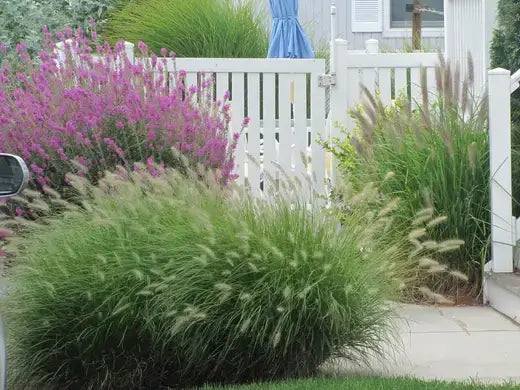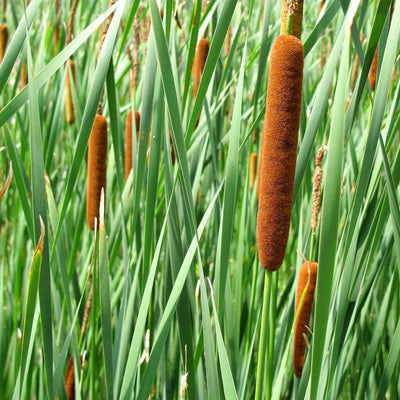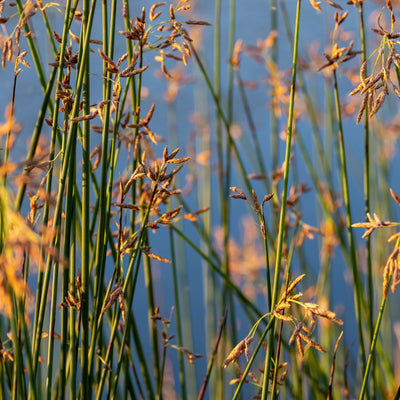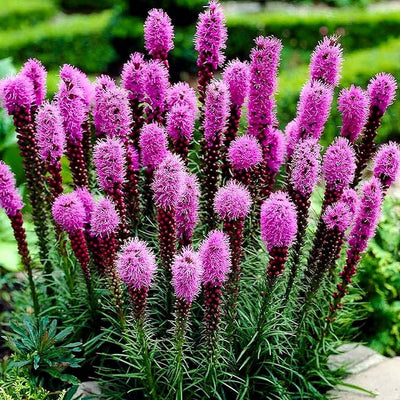How to Grow Grasses Successfully
Cattails and bulrush are vigorous native perennial grasses suitable for marshy ground. They form colonies well-adapted to poorly drained soil. Sturdy underwater roots, called rhizomes, can withstand winter freezing. These large aquatic plants offer erosion control, wildlife cover, nesting materials, and feed. They can even be grown in large pots submerged in manufactured pools and water features.
Soft stem bulrush grows in deep or shallow water, survives flooding and draining, and likes marshy ground and wooded wetlands. Bulrush can even withstand salt or brackish water.
Common soft stem bulrush, also called giant, great bulrush, or bullwhip, is known as Scirpus Validus or S. Validus. Some authorities list it as S. tabernaemontani. If you cannot find seeds or plants to buy, seek along the edges of waterways or ponds for a colony of thick green clumps as tall as 8 feet high. You can collect seeds almost any time of year. Recognize S. Validus by squeezing the stems.
Does the tough green tapering stem about an inch wide at the base feel soft and spongy? Is the clump a stand of stems with no blade-like leaves? Are the flowers and nutty fruits at the tip drooping in hanging ripe clusters with brownish bristled nutlets? Collect ripe fruit or seeds and leave some for the water birds, wildlife, and wrens.
Tips on how to plant grasses
Plant the seeds in pots and offer them winter shelter with good light. Settle the pots in 3 inches of standing water. The seeds will germinate quickly. Let them grow under shelter, using a cold frame in the north until winter is over. When sprouts toughen into seedlings, plant them out where they will grow permanently. Let smaller seedlings grow in pots until summer, and then plant where you have already established the others.
Cattails, or Typha, scatter their seeds on the wind in nature and are collected by deep-digging rhizome roots and re-settling plants in a new colony. Typha can be either narrow or broadleaf. The leaf is blade-shaped. The unique summer-flowering plume spikes mature into the familiar brown velvet pods which give them their name. Typha colonies can range from 3 to 10 feet tall. Their vigorous growth and old debris can blank out competition and access to the water. Typha marches boldly along irrigated field canals and wades into farm ponds and ditches. Holding ground and impeding siltation make cat tails pioneers in a landscape transitioning from aquatic marshland to new growth fields.
Successful control of robust aquatic grasses may require mowing, trimming, dredging, flooding, and freezing.




